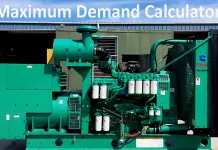What is Electric Current, Fundamental Types Of Current:
Electric Current can be defined as the flow of electrical charge passing through a specified path. Also we can say as the flow of electron is called electrical current. Fundamentally electron flows from negative terminal to positive terminal.
Unit of Current:
Current is always measured by ampere (A), the ampere is The SI unit for measuring electric current. Electrical current often denoted by I
If a net charge Q passes through a conductor or semiconductor for the time of t, then the current
I= Q/t
Where
Q – Charge in C
I – Current in A
T – Time in Sec
The definition for One Ampere:
One ampere of current is defined as one coulomb of electrical charge is moving across for one second is called one ampere.
Let’s see expression:
I= 1/1 => Current I = 1 Ampere.
Also rate of flow of charge is not uniform, the current can be expressed as the function of time. And it will be
I= dq/dt
The charge of an electron is equal to q=1.602 X 10 ^-19 C. Therefore, to get one coulomb of negative charge is equal to 6.26 X 10 ^18 electron/sec
This number is called as Avacatora Number.
Therefore, one-ampere current is equal to 6.26 X 10 ^ 18 electrons should flow in one second.
Electric current is widely used in household and industrial appliances.
Two types of electrical current are, one is alternating current is called an AC current and direct current is called us DC current.
Alternating current:
In alternating current (AC) systems, the movement of electric charge periodically reverses direction, Ac current is most commonly delivered to businesses and residences. The waveform of an AC current is sinusoidal in nature. Alternating current in a circuit is represented by the sine wave. Some of the AC current Such as triangular, square wave etc. are used in semiconductor technology.
To calculate AC current fundamental power formula uses.
P=V x I x cos(pi)
Cos (pi) is Power factor. This plays major role in electrical AC Power system
Direct Current:
First Direct current was called as Galvanic current. Direct current (DC) is the unidirectional flow of electric charge, or a system in which the movement of electric charge is in one direction only.
Direct current sources are
1) Batteries,
2) Thermocouples
3) Solar cells,
4) Commutator-type electric machines of the dynamo type.
Direct current may flow in a conductor such as a wire, but can also flow through semiconductors, insulators, or even through a vacuum as in electron or ion beams.
In order to calculate the current flow through a conductor, Ohm’s law is used. According to Ohm’s law, the current (I) is flowing across a conductor between two given points is directly proportional to the potential difference (V) between the points. The proportionality constant is called resistance and resistance plays major role in electrical energy transmission.
Resistance opposes the flow of electron. A good conductive material should have low resistance or ideally zero resistance. An Insulator should have high resistivity or ideally infinity resistance.
Current is mathematically expressed as I =V/R.
When current passes through a conductor, there is some heat generation due to ohmic loss (Voltage drop across the conductor due to the conductor resistivity) in the conductor. This is operating principle of electrical lighting (only in filament type) which is found by Thomas Alva Edison.
Generally, Electric current is produced Faraday’s electromagnetic induction, some other ways such as Current Conversion from Alternating current into direct current using semiconductor device and Commutator in dc machine, heating effect and mechanical movement.
Current Measurement.
Alternating Current:
Alternating Current can be measured by Ammeter and if the system current requirement exceeds the safe operating level we should use a current transformer to measure current and we should connect the output of the current transformer to an ammeter.
Note: DC Current Cannot be measured by a transformer.
Direct Current:
A small amount of Direct current can be measured by the ammeter, But the current exceeds the safe operating level, then we should use, Shunt resistors, Hall effect current sensor transducers and Magnetoresistive field sensors












![What is Arc Chute? Types, Working Principle [Video Included] arc chute working priciple](https://www.electrical4u.net/wp-content/uploads/2020/06/arc-chute-218x150.png)